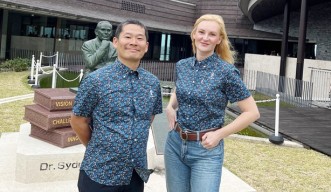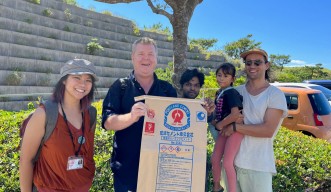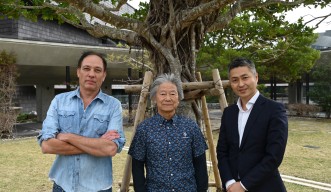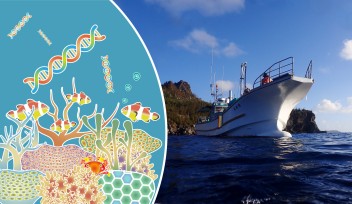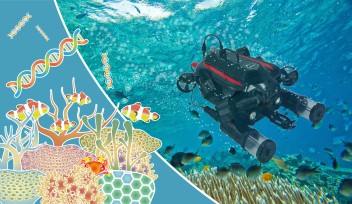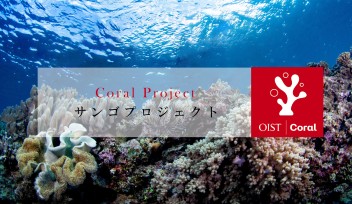OIST’s Coral Project celebrates noteworthy achievements in its first year
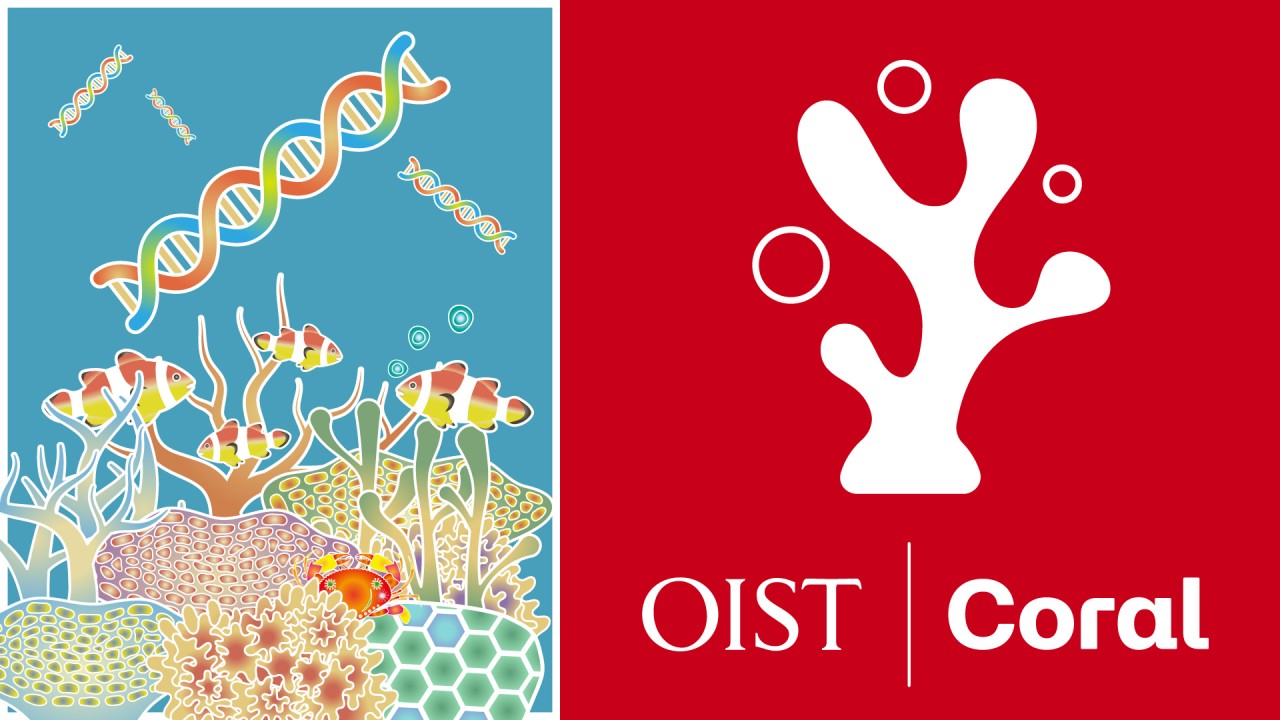
Unlike many global reef locations requiring a boat ride, Okinawa’s reefs are accessible directly from the beach — a simple walk to a nearby beach, a quick dip into the crystal-clear waters, and within moments, you are immersed in a lively ocean community.
Yet elders in Okinawa remember a time when coral-filled waters were more abundant, a contrast to the significant coral decline observed in recent years, especially near shorelines. Worldwide, human activities have resulted in an alarming decrease in coral populations in the last decade. Consequently, efforts to plant corals are gaining momentum.
The OIST Coral Project, an initiative focused on studying and preserving coral biodiversity in Okinawa, was launched in July 2023 at the Okinawa Institute of Science and Technology (OIST). To date, the project has successfully enlisted the support of 20 companies in Okinawa and mainland Japan, however, to further its mission, more partners are needed.
It starts with an idea
In January 2023, Prof. Noriyuki Satoh, head of OIST’s Marine Genomics Unit, sat down with Shimon Sato, an experienced fundraiser and Advancement Officer at OIST. They came up with an ambitious idea: to use knowledge of genomics and eDNA in a new project to plant and conserve coral in Okinawa. This was the start of an innovative effort to protect local marine life by connecting with locals and companies in Okinawa and Tokyo to establish potential collaborations.
Prof. Satoh and his team at the Marine Genomics Unit achieved groundbreaking milestones by decoding the genomes of corals in 2011, zooxanthellae (symbiotic organisms that coexist with corals) in 2013, and the crown-of-thorns starfish (known for devouring corals) in 2017. Their work has substantially contributed to research on coral reef ecosystems worldwide.
Using this knowledge, Prof. Satoh identified the best types of coral that can be planted at specific sites in Okinawa. “We started planting coral at two designated planting sites first — Henza Island in Uruma and Azama Sunsun Beach in Nanjo — in February this year. The aim is to plant 1000 corals within a year,” Prof. Satoh said. There are also plans to start planting coral at a third site in Zamami Island.
Permission was granted by Okinawa Prefecture and planting is done by professional vendors, following Japan’s strict coral planting regulations. Each planting site is overseen by a different fishermen’s organization, each with its own unique team and structure. Before planting, Prof. Satoh engages in negotiations with the fishermen’s organizations, explaining the project’s objectives and benefits. These fishermen, who have a deep understanding and respect for the sea, are important allies. Prof. Satoh has been instrumental in gaining their support and all three sites getting the green light for the project.
Yet this project is not just about planting corals — scientists also conduct eDNA monitoring of corals and study the fish that arrive after the planting, observing which species are on the rise or decline. This multilayered aspect of the project is something Shimon and Prof. Satoh take pride in and promote to potential collaborators.
“This project aligns with OIST’s important goal of contributing to Okinawa and the SDGs. People can see our commitment to Okinawa in the work that we do,” Prof. Satoh explained.
Cause-related marketing for coral conservation
Since the launch of OIST’s Coral Project, Shimon has connected with companies in Okinawa and mainland Japan to encourage them to support the initiative, especially through financial contributions.
Cause-related marketing is one of the unique aspects of this project. This is an approach where businesses associate themselves with societal issues or values by working with non-profit organizations to promote a specific cause. The business boosts sales by connecting with people who care about the same issue, while advancing the non-profit’s work at the same time.
“We began with 8 companies, including Japan’s largest mobile company NTT Docomo in Tokyo and several others in Okinawa. With a lot of effort to get more support, we’ve seen our network of supporting companies grow from 8 to 20 in just one year. It's amazing progress,” Shimon proudly remarked.
Supporting companies can use the project’s unique logo and by displaying the logo on their products, they visibly show their support for coral reef conservation in Okinawa and indicate to their customers that their purchases contribute to a good cause.
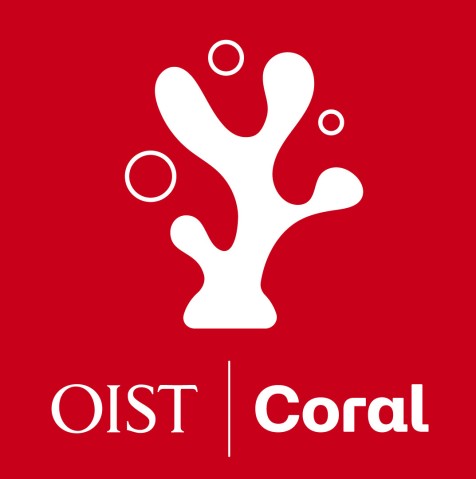
Ryukyu Cement Co., Ltd., the largest cement company in Okinawa, displays the logo on their cement bags and donates a portion of their cement sales to the project. Another notable supporter is Majun, the leading Kariyushi wear company in Japan. Majun has created an original 100% cotton Kariyushi t-shirt embroidered with the Coral Project logo. By becoming a member of the project, supporters can wear this unique t-shirt.
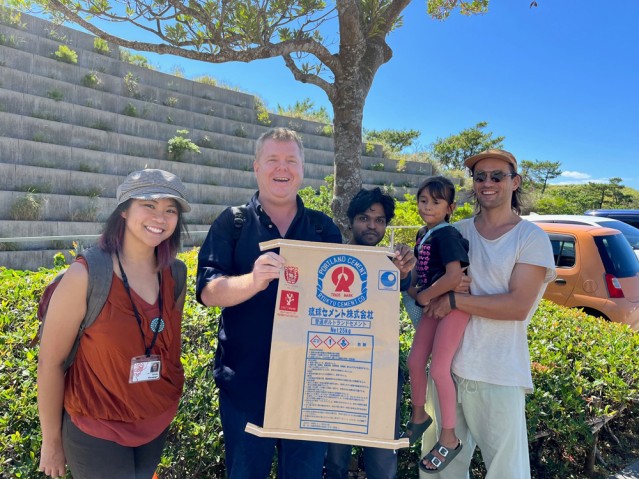
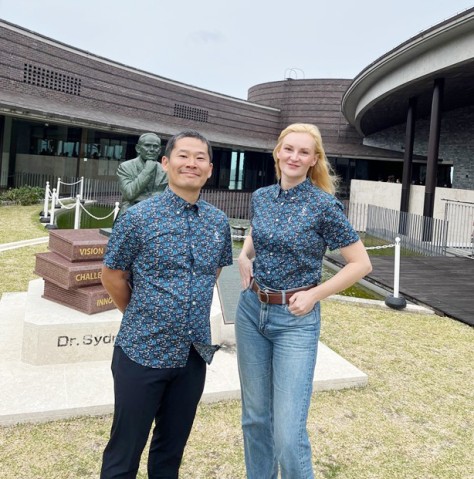
“We also have a 30 second video on the Coral Project shown on a huge LED screen on the Namura Vision I Building in Naha City. It’s shown more than 20 times a day, all year round, so lots of people see it. You can find the video, which is in Japanese, on YouTube,” Shimon said.
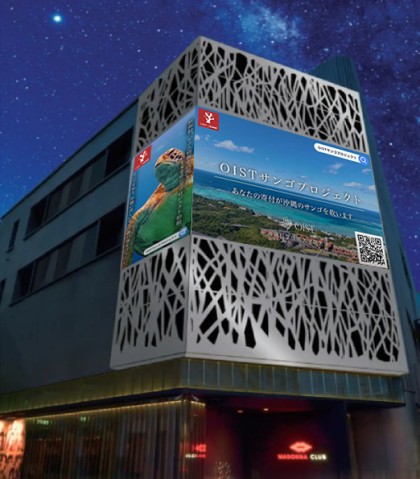
Onna Village – a Village of Coral and SDGs Future City
In 2018 Onna Village, where OIST is located, was declared a ‘coral village’ or ‘sango no mura’ in Japanese, and in 2019 the Government of Japan declared the village a ‘Sustainable Development Goals Future City’. Impressively, the practice of coral planting in Onna Village began two decades ago. In 2004, a local organization, Team Churasango, was established by community members with participation from both local and mainland companies. On average, they plant 1000 corals annually, in response to the observed decline in coral numbers.
“While Team Churasango does not focus on genomic and species-specific knowledge, our project incorporates more scientific methods,” Prof. Satoh explained. Team Churasango has recently connected with the Coral Project for assistance with their coral planting activities, highlighting the potential for wider collaboration. “We are open to partnering with various organizations, recognizing that despite our different methods, we share a common goal. With the support and friendship of many, we can greatly expand this project,” Shimon pointed out.
The project team has recently welcomed a third person – Prof. Timothy Ravasi, leader of the Marine Climate Change Unit at OIST. Prof. Ravasi’s unit uses the latest methods in genomics to study how marine organisms adjust to warmer and more acidic oceans. His expertise will provide a deeper understanding of how coral reefs may respond to future ocean conditions and help in monitoring their health and diversity.
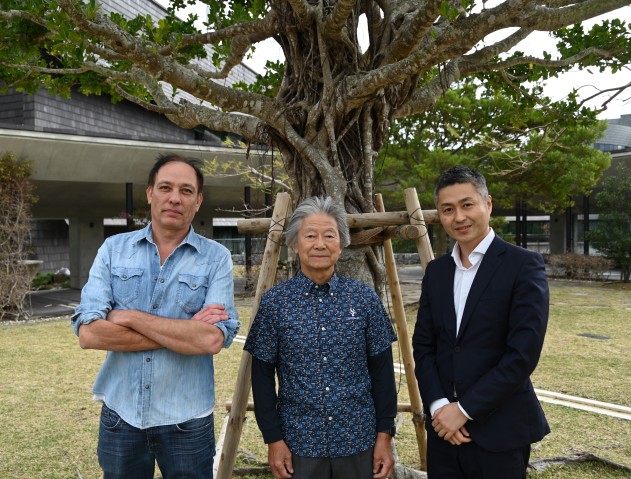
Broadening the scope of Okinawa’s coral conservation voyage
Shimon attributes the success of the project to two main factors. First, Prof. Satoh’s expert knowledge of corals and excellent people skills. Second, the project has secured the support of numerous stakeholders who recognize its significance and would like to contribute to its success. Shimon is keen on promoting philanthropy in Japan, viewing the Coral Project as a philanthropic endeavor that benefits the planet. “Okinawan people value coral, and they want to return the coral reefs to their previous beautiful and healthy state. We want to support those hopes using the power of science,” he said.
“When introducing the project, I talk about its benefits for Okinawa and the environment and emphasize the potential positive impact on a company’s profitability and reputation. Companies know that their environmental efforts can improve their image and branding. It’s amazing how our number of collaborators has grown in just one year.”
Both Shimon and Prof. Satoh are eager to expand the project in Okinawa and abroad and have already received international requests for information on coral planting. They would like to share the knowledge and expertise they have gained so others can replicate their efforts. The duo expresses their gratitude to everyone who has shown interest in and supported the project.
Inspired by the Coral Project? Individuals and companies can support coral conservation and research in Okinawa by becoming Coral Project members. Please see here for more information.
Research Units
For press enquiries:
Press Inquiry Form










